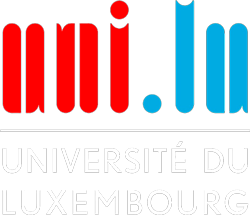Grand Genève et son sol. Property, Ecology, Identity
Our territorial design strategy for Greater Geneva 2050 proposes the creation of one balanced, resilient metropolis out of the two separate agglomerations, offering proximity between work and life and between urban structure and agriculture.
An unbalanced territory
The fast-growing transborder region of Geneva is characterized by a socioeconomic imbalance between the core city of Geneva, where the labour market is concentrated, and an essentially residential belt located over the border, in France. Six hundred thousand people commute every day from this belt to the city of Geneva which hosts many international institutions, including the United Nations and financial service organizations, but has only 200,000 inhabitants.
In between these two agglomerations – the densely-built city centre and the belt with its more scattered buildings – there are gigantic protected agricultural fields, the so-called surfaces d’assolement. This land boosts the quality of the territory with its agricultural production and its landscapes, but it also increases the distances between habitat, labour, and commerce.
Commuting in motor vehicles is responsible for significant CO2 emissions, bad air, and poor quality of life. This presents an interesting contradiction. How can we maintain or even increase local agriculture and, at the same time, offer new housing units? How can we reduce commuting and offer greater proximity between life and work and between neighbourhoods and food production?
A new project by the University of Luxembourg aims to transform the territory into a more coherent and balanced form, creating one resilient metropolis, with enormous undeveloped inner areas, out of the two agglomerations. The main infrastructure leading to the city will be transformed into city streets and boulevards and developed with small urban structures closely related to the agricultural land. These new settlements will offer cooperative neighbourhoods and, at the same time, space for a labour market offering alternatives to institutions and banks, from digital start-ups to craftsmen. They will also incorporate different commercial facilities. Alongside this controlled urbanization, which is delimited by the built, the project emphasizes a reconfiguration of the unbuilt. The goal is to transform the currently dominating monoculture into a wide range of ecological and agronomic typologies: from permaculture to biodiversity reserves, from leisure to landscaped parks.
To create a more productive dialogue between the built and the unbuilt terrains, the plan is to strengthen them and create a self-sufficient cité-agricol. To do this, access to land is a prerequisite. We shall explore various Swiss precedents and practices that separate the land from the built to identify innovative land use.
The ‘Grand Genève et son sol’ project uses the methodology of the principle of research by design and design by research. An interdisciplinary team composed of architects, town planners, geographers, ecologists, transport planners, landscape architects, and economists analyses the territory using research and GIS-driven maps and has developed a nine-point charter:
- (1) The cité agricole,
- (2) The built and the unbuilt,
- (3) The form,
- (4) From quantitative to qualitative growth,
- (5) Less mobility and more proximity,
- (6) Agro-ecology,
- (7) New commons for the built and the unbuilt,
- (8) Energy transition,
- (9) Greater territorial equity.
The project is a collaboration between the University of Luxembourg, ETH Zurich, and the Zurich-based design office Raumbureau. It will be presented in spring 2020, taking the format of an exhibition.
